
 |
|
|
|
|
#1 |
|
Member
Join Date: Dec 2004
Location: What is still UK
Posts: 5,806
|
This is a picture from my latest book purchase. BENIN Kings and Rituals, Court Arts from Nigeria. A fantastic large tome that accompanies a traveling exhibition through 2007-2008 Vienna has finished but Musee du quai Branly Paris, Ethnologisches Museum- Berlin, The Art Institute of Chicago are all still to stage the exhibition in 2008 if you have the money you must go, be there or be square man.
Anyway this first picture does make you wonder just how many Asian parang blades were made in Europe. 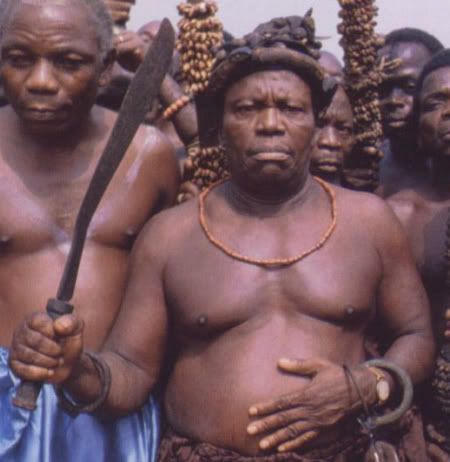 This is a bit far out made in Birmingham. 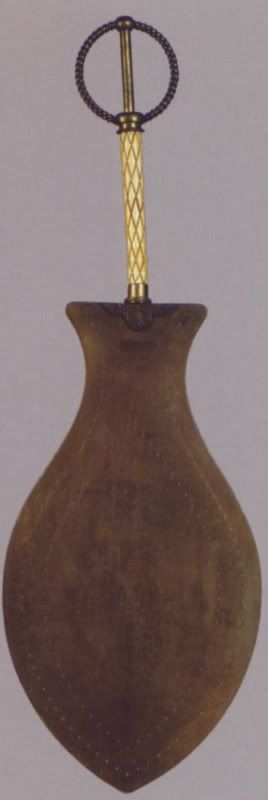 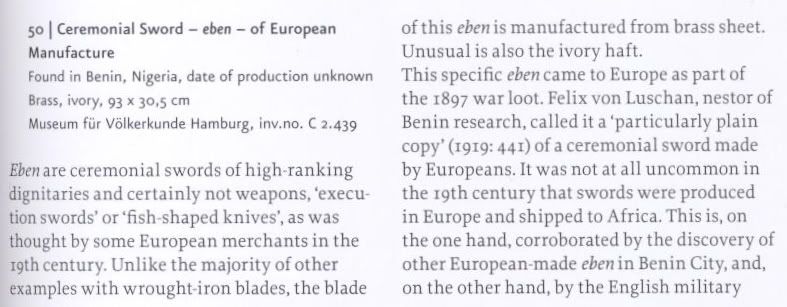 These other pictures are post here just because they are simply marvelous. As far as I know these may be the only weapons on show but hey they are not to be missed.  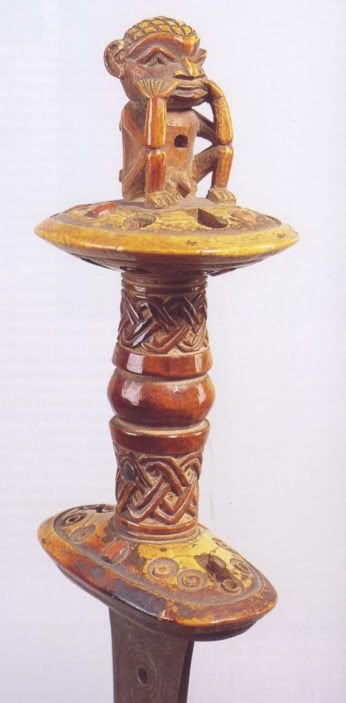  
Last edited by Tim Simmons; 30th January 2008 at 10:39 AM. Reason: spelling |
|
|

|
|
|
#2 |
|
Member
Join Date: Dec 2004
Location: Sint-Amandsberg (near Ghent, Belgium)
Posts: 830
|
Here's one, Tim
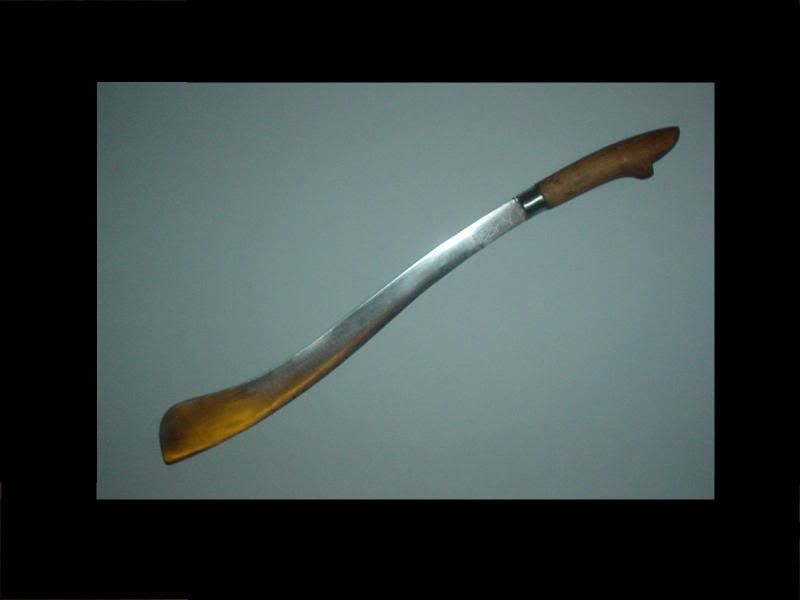
|
|
|

|
|
|
#3 |
|
(deceased)
Join Date: Dec 2004
Location: Portugal
Posts: 9,694
|
Hi Tim,
That sword with the cross on the blade ... It's amazing the connection between it and specimens already made in the 16/17th century. Here is an example that apparently belonged to a Benin Sovereign. The cross is in brass, alledgely the Christian symbol. The iron blade is of a classic pattern, already found in pharaonic tumbs. The guard is of Portuguese influence, as must be the guy's face on the protection bridge, formed by the double finger guard. The grip shows Cingalese influence, certainly brought over by Portuguese sailors. Both piece and classification belong to the collection of Rainer Daehnhardt. Fernando |
|
|

|
|
|
#4 |
|
Member
Join Date: Dec 2004
Location: What is still UK
Posts: 5,806
|
Fernando, what a fascinating reply. I have read that the cross motif we see here is not related to Christianity. Especially if one reads about the prelude to the sacking of Benin and the moral outrage activities of Benin city society encouraged. Public execution of the condemned could be likened to human sacrifice to maintain order and continuity, all the more so when the methods are cruel. The British had by that time stopped the practice. Your post shows the long and dubious history Europe has with the trade coast. I wonder if the handle is more likely royal lions, symbols found in both west African and European ruling households.
|
|
|

|
|
|
#5 |
|
Member
Join Date: Dec 2004
Location: Virginia
Posts: 520
|
Just a couple of thoughts
First the sword posted by Freddy looks to me like a ladieng perhaps with a a hulu rumpung. Local made blades for these were often laminated. Second the animal motif on the sword posted by Fernado does indeed resemble a kastane. I have never seen that on an african sword before is it common ? |
|
|

|
 |
|
|